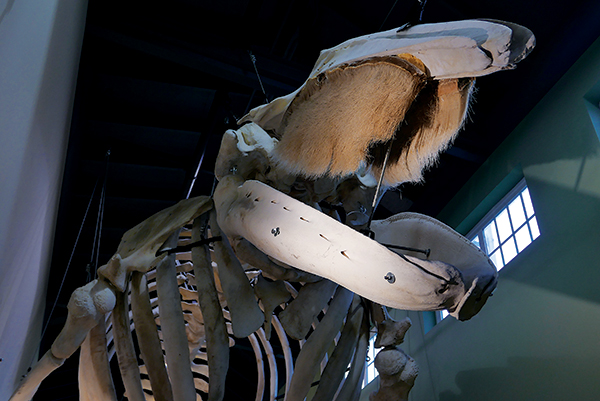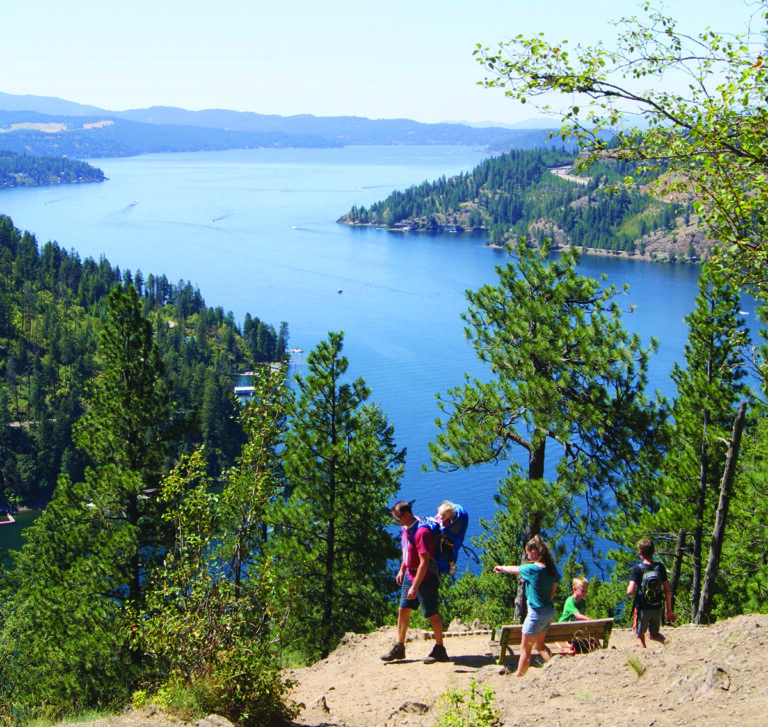When children enter Highline College’s Marine Science and Technology Center at Redondo Beach and look up at the 38-foot gray whale skeleton bearing down on them from the rafters above, its jaws open, its ribs a cage that could hold a person, its vertebrae reaching back, back toward the rear of the building, they often ask, “Is that a dinosaur?” I feel the same wonder looking over these bones. I count the ribs and the flanges, I marvel at softball-sized ear bones and coffee table-sized scapulae. The jaw is longer than I am tall. Nuts, bolts, rods, cables, and glue have replaced tissue, tendons, cartilage, sinews, and ligaments, but I can still see the rhythmic thrust of these flukes propelling an 18-ton leviathan through the sea.
Seattle Pacific University is hoping to hang a whale skeleton of its own. So last summer, when a gray whale washed ashore on Washington’s coast, I led a crew to extract its bones. With the necessary permits in hand, we were advised by Rus Higley, who’s built three whales. Because the beach had swallowed two-thirds of the whale, we weren’t able to retrieve the full skeleton. This whale became a test run so that Rus could teach us the process of retrieving and cleaning bones in anticipation of working on a full whale in the near future.

Alongside Higley, I take a knife to the nine-inch thick blubber, cutting out a square-foot block of flesh, heaving it to the sand. We remove these blocks, one after another, until we reach the bones. Poet Kathleen Jamie writes, “Unless you have a professional interest, it’s possible that the only bodies you’ve been intimate with, have scrutinized, have been the bodies of lovers or children.” My hands, my arms, are inside this animal I’ve previously only watched from afar, its blood and fat and oil now smeared across my skin as I kneel inside its mouth, my thigh leaning against its tongue. It’s a strangely intimate, even tender, moment. Working at the beach, new words enter my vocabulary—flense, carcass, carrion, rot, putrid, rancid—words I rarely, if ever, say. I do not get to choose these words. A long history of whaling and the present circumstances give them to me.
After we leave the beach, the next step is to remove the oil from the bones. It drips everywhere. I talk to other people who have built whales. Some soak the bones, others boil them. Higley recommends burial. The enzymes in the soil will leech out all the oil in a year. Only once the bones are clean can we begin articulating them. So, we bury our bones. The land where they’re now laid to rest has sprouted the most verdant grass I’ve ever seen.
Humans have been slaughtering whales for hundreds of years. At the beach that day, we too were flensing a whale, but it was hopeful: an act of preservation, of conservation, of education. Historian Philip Hoare writes that building a whale skeleton is a way “to give it life after death.” That’s true, but we hope this life isn’t for that one whale alone: when visitors someday soon stand beneath a whale’s sun-bleached bones suspended in SPU’s science building, may its death prompt us to save others. //
Peter Wayne Moe is a professor at Seattle Pacific University. If you’d like to support this project, he can be reached at moep@spu.edu.
[Feature photo by Peter Wayne Moe.]












